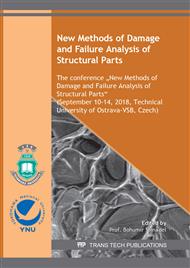p.34
p.40
p.46
p.52
p.58
p.64
p.70
p.76
p.82
Influence of Passivation on Wettability of AISI 304 Steel and its Corrosion Properties in Solution of Sodium Hypochlorite
Abstract:
The contribution is aimed at corrosion propertied and wettability of basic graded of stainless steel commonly used in medicine as a standard for construction of instruments and other applications. Samples of AISI 304 (1.4301) steel were chemical passivated by nitric acid and tested for corrosion resistance in environment of sodium hypochlorite (NaClO), which is commonly used for basic disinfection of surfaces or devices in hospital facilities. It was found that chemical passivation of stainless steel surface increases its corrosion resistance and lower corrosion rate. Passivation layer also shows more polarization resistance. The wettability of passivated surface was measured by sessile drop method. Wettability itself determinates effectivity of disinfection process as the surfaces with lower contact angle may be cleaned and disinfected with more efficiency. It was proofed that chemical passivation increases wettability by lowering contact angle of treated surface.
Info:
Periodical:
Pages:
58-63
Citation:
Online since:
July 2019
Authors:
Keywords:
Price:
Сopyright:
© 2019 Trans Tech Publications Ltd. All Rights Reserved
Share:
Citation:



